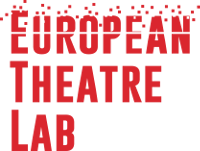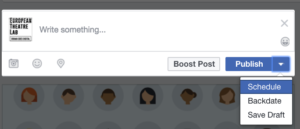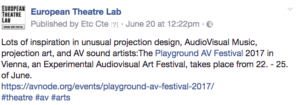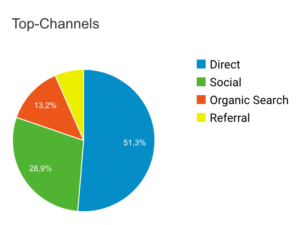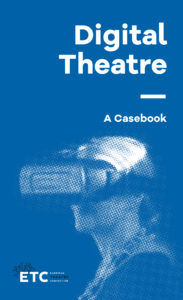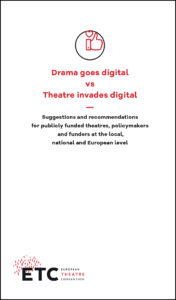Digital means like Facebook, Twitter, and other social media platforms have become a common tool in modern communication, and of course also in theatres and other cultural institutions. However, there are some tips and tricks you might not know yet which can make your community management more effective. We put together some of the most important basics. If you want to dig a bit deeper into the matter, you can also watch our 3 webinars on social media for theatres that are available on YouTube. More posts will follow!
Let’s start with the social media basics, a.k.a. Facebook and Twitter. While they are often mentioned in the same sentence, they do differ regarding some key aspects. Facebook does have a complex algorithm, that determines how many users will see your content. Don’t post too often when your posts don’t gain any reach – otherwise, Facebook will deem your content irrelevant and show it to less users. If you want to bring some structure to your Facebook posts, you can work with an editorial plan. This allows you, to draft your posts a few hours, days or even weeks before you post them and thanks to Facebook’s schedule option, you don’t necessarily need Buffer, Hootsuite or comparable software to schedule your post ahead of time.
When working on your content, try to find out what your audience likes. Certainly, you should also enjoy what you’re doing, but ultimately, you want to reach an audience and make them appreciate your content. This means that there is no such thing as a set way regarding what content to post and how to manage your Facebook page. Rather, it is trial and error, as well as observing what your audience enjoys reading. Facebook offers ‘insights’, an overview of the performance of your posts, so you can easily see which topics are liked the most and at what time the online activity of your community is at its peak.
When posting on Facebook, try to always use a picture. Posts with pictures garner much more attention. Also, you can use hashtags (which start with ‘#’) to increase your reach because others might use the same hashtag. Try to keep it easy on the amount of hashtags to not look spammy; 3-4 hashtags maximum should suffice.
Facebook also offers the possibility to upload videos and even to live stream what you are currently doing. This means you could use short snippets of a full rehearsal to advertise an upcoming play or stream a post-play discussion live on Facebook. It is especially effective to post little glimpses into the backstage activities of your theatre – like the building of a stage set which makes your audience feel involved in the daily life of this creative place. Please do keep in mind, that Facebook is not about monologue, but should create a dialogue. Try to ask your audience questions and ponder, how your post can improve a readers life.
Twitter limits its users a bit more, to 144 characters to be precise (not including pictures). This means your message should be concise, because you can’t go into much detail. You can, however ,post a link that goes to a site containing more details. Also, Twitter does not punish you, if you post multiple times a day and not as many people read your posts. Hashtags are the heart of a Twitter posts. Whenever you compose a post, try to think of suitable hashtags at the same time. What makes a good hashtag? Try to find out what keywords your target audience uses to search on Twitter and add those keywords as hashtags to your post. Also, if you do have a suitable picture, feel free to include it as well.
Both platforms offer plenty of opportunities to work with images. No matter if you use a website that captions them, an animated GIF or one of your own images, pictures are a great way to provide additional value to your audience, no matter if they shall mainly entertain or educate as well.
Another interesting social media platform for theatres and cultural institutions is YouTube. Basically, you can use YouTube to live stream as well or upload videos. This could be a short video (i.e. a lead actor inviting people to attend the show) or a long video (i.e. a master class on method acting); the only limiting factor is your imagination. Always use a catchy title with key words that can be found easily. Also, make sure to use the description space underneath the video. You can fill it with some additional information about the video your users will be seeing. Obviously, it is important to promote the YouTube content on the other channels you are using.
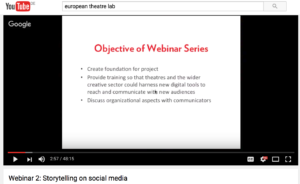
YouTube is a great platform for webinars and uploading videos of a play, casting or stage being build.
In addition, there are also Snapchat and Instagram, 2 newer social media platforms. Snapchat is like theatre, meaning that what happens, does so live and is only available for a brief moment. Instagram is one way to post interesting pictures. In our second webinar ‘Storytelling on social media’, we mentioned a few good examples of theatres using these platforms.
Blogs are frequently undervalued. They offer a great chance to produce valuable content you can share via Facebook and Twitter, but also give visitors a reason to return to your website. Lastly, but definitely not least, it can help you tremendously with your SEO (Search Engine Optimization) efforts; if you blog frequently and write high quality content. When drafting a blog post, don’t try to fool search engines, i.e. by employing tactics such as keyword stuffing, but focus on delivering a blog post that adds value to your visitors life. Google’s algorithm does reward good content, but it might need some time until you see the results.
Speaking of which, are you using an analytics solution yet? Common tools are Google Analytics or Piwik, as well as Google Webmaster Tools. You should employ them to learn how many people visit your website, but also where they come from. Did Google bring them, did the come from your Facebook site, from your newsletter or elsewhere? Google Webmaster Tools can tell you what position your site has on Google for certain keywords, how many impressions that keyword has gotten and how many people clicked on it (so called Click-Through-Rate, commonly abbreviated with CTR).
This was a first introduction into how your theater can gain more from free online marketing tools. We will provide you with additional blog articles in the foreseeable future and also welcome any constructive feedback. Please also remember that theatre is teamwork and so is social media. Let folks in your team participate and be part of your social media strategy. Online marketing, just like life, means to experiment at times to find out what works and what does not.
